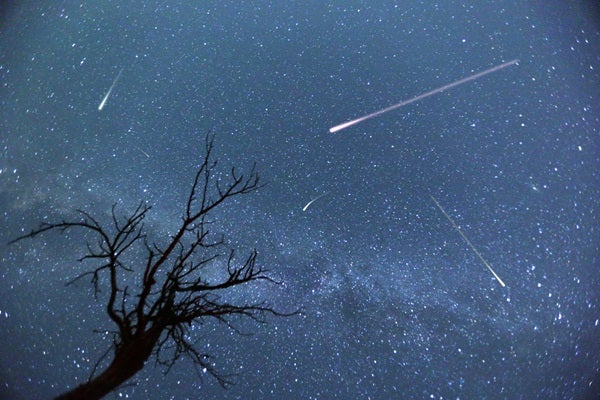(Inside Science) — Keep your eyes on the night skies this month: The Lyrid meteor shower is set to become active around April 15 and should peak on the evening of April 21 into the early morning hours of April 22. If the weather that night doesn’t cooperate, one night before or after the peak is also expected to give onlookers a good viewing opportunity as well.
Don’t expect to see hundreds of meteors — the Lyrids don’t produce a whole lot, perhaps 10 to 15 per hour, but they’re more likely than other major showers to include bright, dramatic fireballs. Every few decades we get an outburst during the Lyrids that boosts the rate up to about 100 per hour. That’s not predicted to happen in 2021, but such things are also notoriously hard to predict. Watch this video animation on how meteor showers are predicted!
The source of the Lyrids is the debris cloud left behind by a comet named C/1861 G1 Thatcher that was last seen in the 19th century and won’t pass through our inner solar system again for more than two centuries! Each year, though, the Earth drifts through the dust cloud it left behind. Little space pebbles and other bits of dust and debris collide with our atmosphere and burn up high above us, producing those fleeting little light shows so many are willing to stay up late or wake up early to catch.
This story was originally published with Inside Science. Read the original here.










